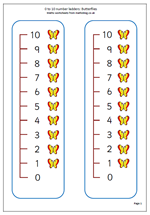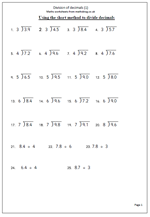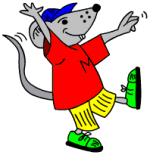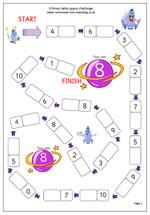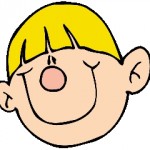 This is the final article in our series on what maths children should know, although I will be returning to this theme again and again in the future.
This is the final article in our series on what maths children should know, although I will be returning to this theme again and again in the future.
Much of the work carried out in year 5 eg addition and subtraction will need to be reinforced and is not covered in these targets for year 6. Please note that this is only a summary of the key areas of maths to be covered in the year. Some of the work here will be too difficult for many year 6 children: it is very much a set of targets published by the Primary Framework rather than a realistic review of what children can actually achieve. It does give you a good idea of what teachers are hoping to achieve with their children by the end of year 6.
I believe that if a child can successfully meet these challenges then they have a very bright future in maths ahead of them.
Counting and understanding number:
By the end of year 6 children should
• be able to add or subtract using negative numbers in contexts such as temperature.
(eg The temperature is -7 degrees. It rises by 3 degrees. What is the new temperature?)
• understand decimals up to thousandths and partition numbers.
(eg 4.567 = 4 units + 5 tenths + 6 hundredths + 7 thousandths.)
• round decimals.
(eg round 4.56 to the nearest tenth.)
• order decimals up to 3 decimal places and place them on a number line.
(eg order these numbers: 0.7, 0.77, 0.707.)
• understand and use improper fractions.
(eg recognise that 8 pieces of a 5-piece chocolate cake is 8/5 or 1 and 3/5.)
• simplify fractions by cancelling.
(eg 6/10 = 3/5.)
• write one quantity as a percentage of another.
(eg write £30 as a percentage of £300.)
• find equivalence between percentages, decimals and fractions.
(eg 1/10 = 10% = 0.1.)
• solve simple problems involving ratio and proportion.
(eg Sarah has 15 sweets. She gives Tasha 1 sweet for every 4 she keeps herself. How many sweets does Tasha get?)
Knowing and using number facts:
By the end of year 6 children should
• use knowledge of tables to multiply decimals.
(eg multiply 0.6 by 8.)
• use knowledge of tables to divide decimals.
(eg divide 4.8 by 8.)
• use knowledge of tables to work out square numbers up to 12 x 12.
(eg the square of 11?)
• use knowledge of tables to work out the squares of multiples of 10.
(eg the square of 30?)
• understand that prime numbers only have two factors and identify prime numbers up to 100.
(eg what is the next prime number after 17?)
• find the prime factors of 2-digit numbers.)
(eg find the prime factors of 12.)
• use various methods to check answers to calculations, including rules of divisibility.)
(eg if the sum of the digits of a number is divisible by 3 then so is the number.)
Calculating:
By the end of year 6 children should
• mentally add decimals.
(eg 4.5 + 3.2)
• mentally subtract decimals.
(eg 5.4 – 3.8)
• mentally multiply decimals.
(eg 3.6 x 5)
• mentally divide decimals.
(eg 4.5 divided by 9.)
• use efficient (standard) methods to add numbers, including decimals.
(eg £6.78 + £9.85)
• use efficient (standard) methods to subtract numbers, including decimals.
(eg £9.78 – £5.85)
• use efficient (standard) methods to multiply numbers, including decimals.
(eg 345 x 67)
• use efficient (standard) methods to divide numbers, including decimals.
(eg 456 /8)
• relate fractions to multiplication and division.
(eg 8 divided by 2 = ½ of 8 = 8 x ½)
• know the term quotient and state as a fraction or a decimal.
(eg 54 divided by 5 = 10.8 or 10 and 4/5.)
• find fractions of whole numbers.
(eg find 4/5 of 60.)
• find percentages of whole numbers
(eg find 60% of 48.)
• make sensible use of a calculator to solve multi-step problems.
Understanding shape:
By the end of year 6 children should
• classify 2-D and 3-D shapes according to their properties, including recognising parallel and perpendicular sides/edges.
(eg know the diagonals of a square intersect at right angles.)
• become increasingly accurate when drawing or making shapes.
• be able to reflect, translate and rotate shapes through 90 degrees or 180 degrees.
(eg sketch the reflection of a 2-D shape on a grid.)
• use co-ordinates in the first quadrant to draw and complete shapes.
(eg sketch the position of a triangle after it has been translated 2 units down.)
• learn to use a protractor to measure and draw angles.
(eg draw an angle of 45 degrees.)
• calculate the angles in a triangle.
(eg if two angles of a triangle are 60 and 70 degrees, calculate the third angle.)
Measuring:
By the end of year 6 children should
• choose and use to a suitable degree of accuracy metric units of measurement.
(eg measure 450 ml of water in a jug.)
• convert between units using decimals to two places.
(eg change 3750 ml to 3.75 litres.)
• recognise that measurement is approximate and decide on the necessary degree of accuracy when measuring.
(eg measure the length of a tray to the nearest 1 cm.)
• calculate the perimeter and area of rectangles.
(eg know the formula for finding the area of a rectangle.)
• estimate the area of irregular shapes by counting squares.
(eg count any square more than half covered as a whole square and any less than half as zero.)
Handling data:
By the end of year 6 children should
• use the language of chance or likelihood to describe and predict outcomes.
(eg answer the question; what is the probability of throwing a 5 with a 1 to 6 dice?)
• collect, sort, process and present data to solve a problem and interpret the results.
(eg find the most common period of time that goals are scored in the Premier League.)
• construct frequency tables, bar charts, line graphs and pie charts to show results of investigations.
(eg show frequency table for times of goals scored.)
• identify the difference between discrete and continuous data.
(eg draw a line graph in which intermediate values have meaning.)
• use the terms mode, range, median and mean.
( eg know that mode means the most common.)
Using and applying mathematics:
By the end of year 6, when investigating, children should
• choose appropriate operations to solve multi-step problems.
• decide whether to calculate mentally, on paper, or by calculator.
• use tables to show the steps taken.
• record results and check accuracy.
• suggest plans and lines of enquiry.
• review methods used.
• begin to use simple formulae in words and then symbols.
• explain orally, in words or diagrams their reasoning and conclusions.


